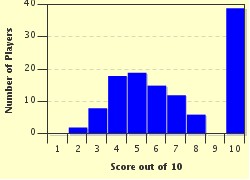
Girl Groups and their Lead Singers: 1960s Quiz
Match the lead singer(s) to the group with which she is most identified. If you are no expert, with common sense you have a shot, but quiz is directed at serious fans of 1960s music. Chart positions are from the US Billboard Hot 100.
A matching quiz
by Nealzineatser.
Estimated time: 4 mins.
